It’s weed season. Mid-summer heat and rain cause weeds to come up everywhere. Uggh!
But weeds are not all equal. Some of them can be ignored for a bit while you enjoy a little summer relaxation. But others are so aggressive and so destructive they should be eradicated on sight. Can you recognize the worst culprits as soon as they emerge?
There are over 1000 invasive plant species in the US. These are non-native plants that have spread themselves widely because they have no natural controls on this continent. They cause enormous harm when they take over natural areas, displacing native plants, and often ruining ecosystems.
Each region in North America has its own “worst enemies” among invasive plants, so any short list will be too limited. But learning to identify the worst plant villains in your local area is worthwhile, especially so you can take action when they first appear.
So, here are “baby pictures” of a few of the worst culprits to watch out for in our area (Southern Westchester County, New York) and in much of the Northeast and Mid-Atlantic regions:

Mugwort is a perennial herb introduced to North America long ago, probably by settlers who valued its medicinal properties. It spreads very aggressively, mostly by underground runners. Bits of Mugwort root can be transported in soil in nursery pots, transplanted trees and shrubs, sod, purchased topsoil or fill, on lawnmowers, and even in compost. Any root fragment in the ground will sprout new plants, so when you are weeding, roots must be dug out completely and repeatedly. Left alone for even a season, Mugwort will invade large areas. If (when!) you see little sprouts that look like chrysanthemum leaves, dig them out as soon as possible. They can pop up anywhere, so monitor your gardens, lawn, and even tiny cracks in pavement. The goal is to prevent them from forming new communities like this:

Porcelain Berry (Ampelopsis glandulosa var. brevipedunculata) is a terribly destructive vine that overgrows trees, shrubs, and groundcovers, eventually killing them. It was introduced intentionally by the nursery trade as an ornamental garden plant and, shockingly, is still offered for sale. Millions of dollars have been spent trying to control this invasive weed since it has escaped gardens and now covers trees, roadsides, and open areas throughout the Eastern US.
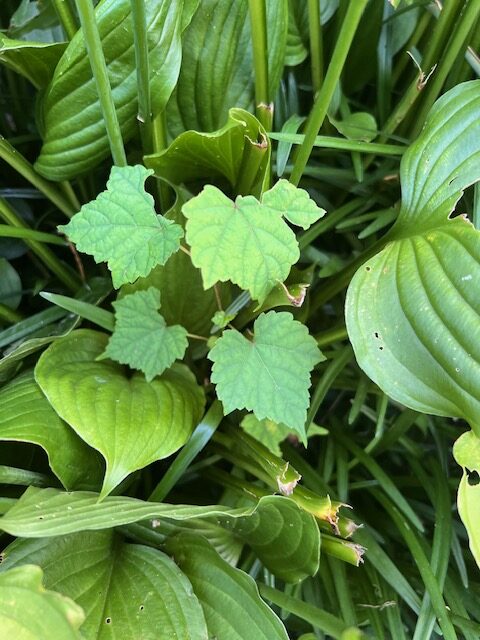
Porcelain Berry seedlings can be tricky to identify since the leaves actually change shape as they mature. Young leaves look like grape leaves, but as they mature, they become more deeply divided, with 3 long-pointed fingers and 2 shorter ones. The leaves branch from a thin stem that quickly threads itself through taller plants.
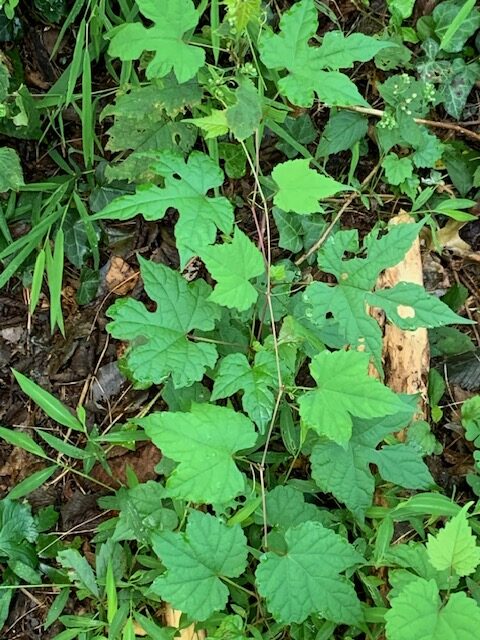
Porcelain Berry seeds are widely distributed by birds who eat the berries, so you will see seedlings sprout under trees, shrubs, fences, and power lines wherever birds perch. It is important to catch the seedlings early before the vines cover everything within reach, stealing sunlight and choking trees and shrubs. Learn to identify Porcelain Berry’s young leaves, and pull seedlings out by the roots as soon as you see them.

Oriental Bittersweet (Celastrus orbiculatus) is another destructive vine that also was introduced as an ornamental garden plant. Although it can look innocent as a seedling, mature vines can grow 80 to 100 feet tall, becoming incredibly thick and heavy, and often pulling down even large trees.
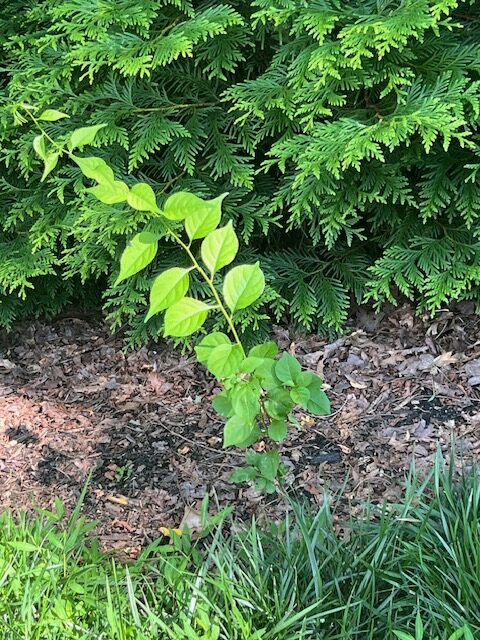
Like Porcelain Berry, Bittersweet spreads primarily by seeds carried by birds. When the seeds germinate, the young leaves have pointed tips that become more rounded as they age. Young stems immediately begin reaching upward, making their identity as vines clear.
Pull young vines out by the roots as soon as they appear, and cut down any vines that have reached your trees and shrubs before berries can develop. Preventing seed distribution is critical to controlling this invasive plant.
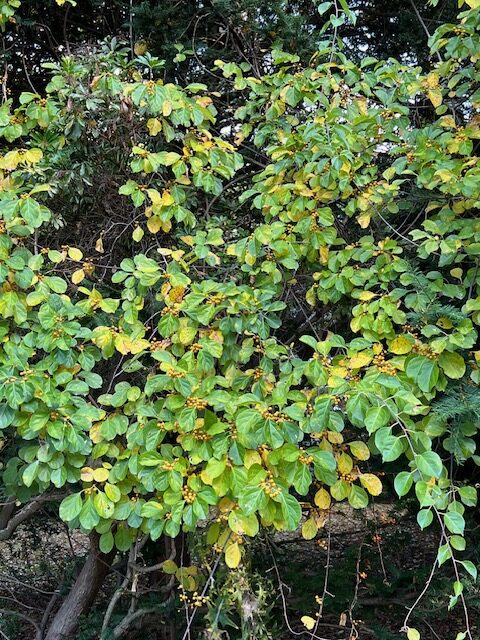
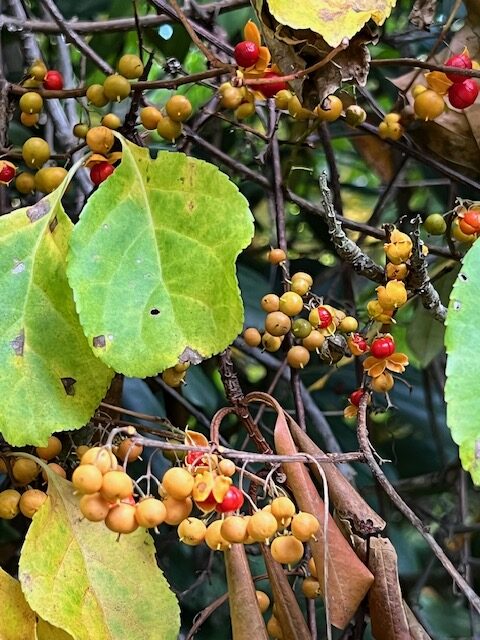
Japanese Knotweed (Polygonum cuspidatum or Fallopia japonica) has invaded 42 states in the US, including large areas of open meadows and wetlands, overwhelming native plants and destroying essential habitat for birds and other animals. It, too, was introduced intentionally as an ornamental plant and for erosion control on highways. It spreads both by seed and by underground roots and should be destroyed the minute it appears in your garden.
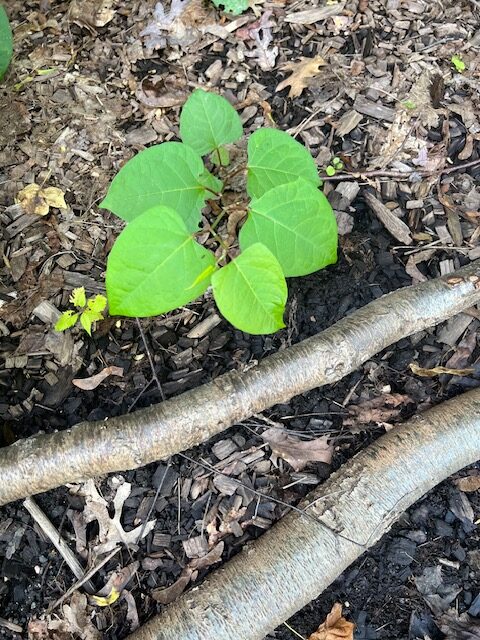
Its large, heart-shaped leaves are easy to spot, and its stems form a characteristic zig-zag shape. In late summer, large fluffy white flowers appear on top of stems that can reach 5 to 7 feet tall. But you really don’t want to let it get anywhere near that size. If you are unlucky enough to have a large stand of Japanese Knotweed on your property, you may have to call in professional help to eradicate it.
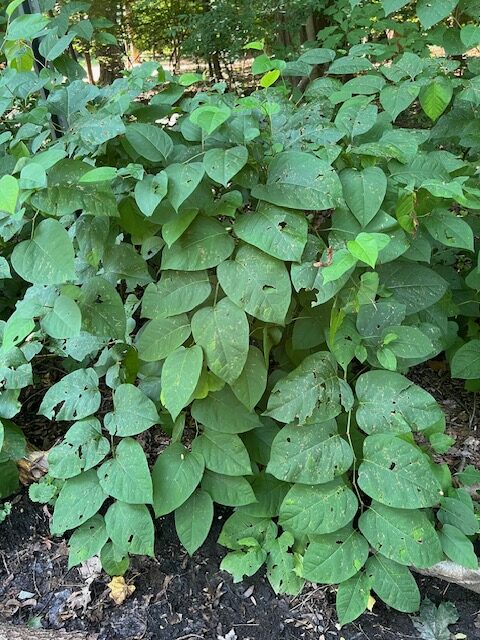
If you find any of these plants on your property, zero tolerance is the best policy. Pull them out with the roots while they are small and monitor for re-growth. Be sure to dispose of the weeded plants in the trash, not in compost or weed piles where they may survive to germinate again. Avoid sharing garden plants from areas where you know these weeds have been present.
Though use of chemical herbicides is usually a bad idea for human and environmental health, for big infestations of these particular weeds, you may have to resort to targeted professional applications of specific herbicides. Consult experienced tree care and landscape maintenance professionals and your local agricultural extension service for recommendations. Routine seasonal applications of herbicides on lawns and ornamental shrubs cause far more harm than good, and are not particularly effective against these most difficult invasive plants.
Weeds are a fact of life in even the best-kept landscapes. Knowing which ones can be tolerated and which cannot is important. Be vigilant, and nip ‘em in the bud!

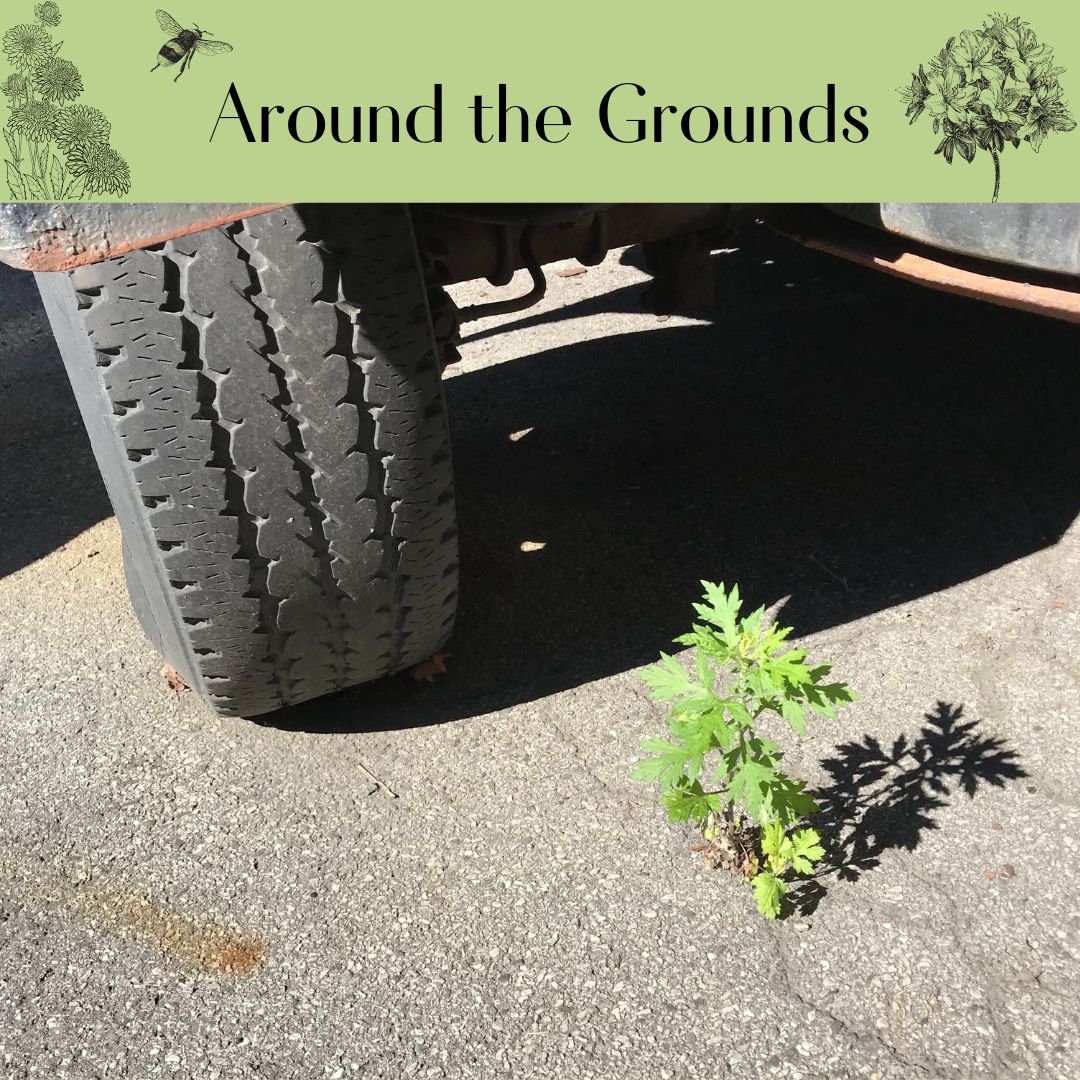
thank you for the article! the photos and descriptions are really helpful.
i’m wondering what we might do about the systemic issue, beyond helping individual gardeners and property owners to weed. if japanese knotwood is already overwhelming local wildlife habitats, there’s not much that one person keeping it out of their yard will accomplish.
where i live in yonkers, it almost feels too late. whole hillsides are covered in porcelain berry … and kudzu? either way, old oaks are falling, being replaced by vines, ivy, and paulownias.
how do we get our elected officials to take these invasive plants seriously? they’re taking down trees, increasing our risk from (increasingly common) extreme weather events, making us more vulnerable to heat and heavy rain, while destroying ecosystems. at the very least, maybe they could understand the obvious political and economic consequences: they’re eroding our quality of life and decreasing property values.
I share your frustration! There are community volunteer groups that have organized vine-cutting campaigns, and others that have worked to clear invasives in parks, roadsides, and public areas, replacing them with native plantings. It is always heartening to see those efforts, and I believe they can make a difference. I wish I had a better answer for you about how to influence government to do more — I guess the same way public pressure moves government on anything: speaking up, writing letters, organizing voters, and voting. I hope that educating people about the threat of invasive plants, teaching people how to identify them, and asking people to avoid buying and planting the worst offenders (ivy!) is a start.
Best we’d weed lest they breed
Yes! ?
Wonderful article. Another problem is the showy Japanese Wisteria, sold and grown for it’s beautiful flowers to cover arbors…..it seeds prolifically, and is taking down trees along the Croton Aquaduct!
I never use chemicals – except sparily in the fall on some of these invasives. I cut the plant low, then IMMEDIATELY apply glosophate to this wound by foam paintbrush (NOT spraying), knowing that root activity is high now and my chances of success will be greater and contained within this one plant. Of course, first consider any valuable nearby plants.
That method is used by experts to control invasive vines on public property, roadsides, etc. Cutting and painting the cut stems works and minimizes damage to other plants. Great tip!
Great Info Cathy!
Isn’t it ironic that although Japanese knotweed was introduced to control erosion, it actually exacerbates erosion along river and stream banks. Nationwide, it’s probably one of the worst plants intentionally introduced in the US
Yes! I think kudzu was also brought in to control erosion. A huge mistake!
I never realized that many were introduced as ornamental plants but I guess that makes sense. It’s great to see the photos since I’ll be able to identify them better. I had no idea we should be putting them in the trash but now that seems like common sense. Thanks for this important information, very essential to know.
Always the best! Thank you Cathy.
Thank you for the very helpful information!
Great advice and clear pics/descriptions, this one’s a keeper!
Glad it is helpful. Thanks for the feedback!
Valuable well presented information. Thank you Cathy!